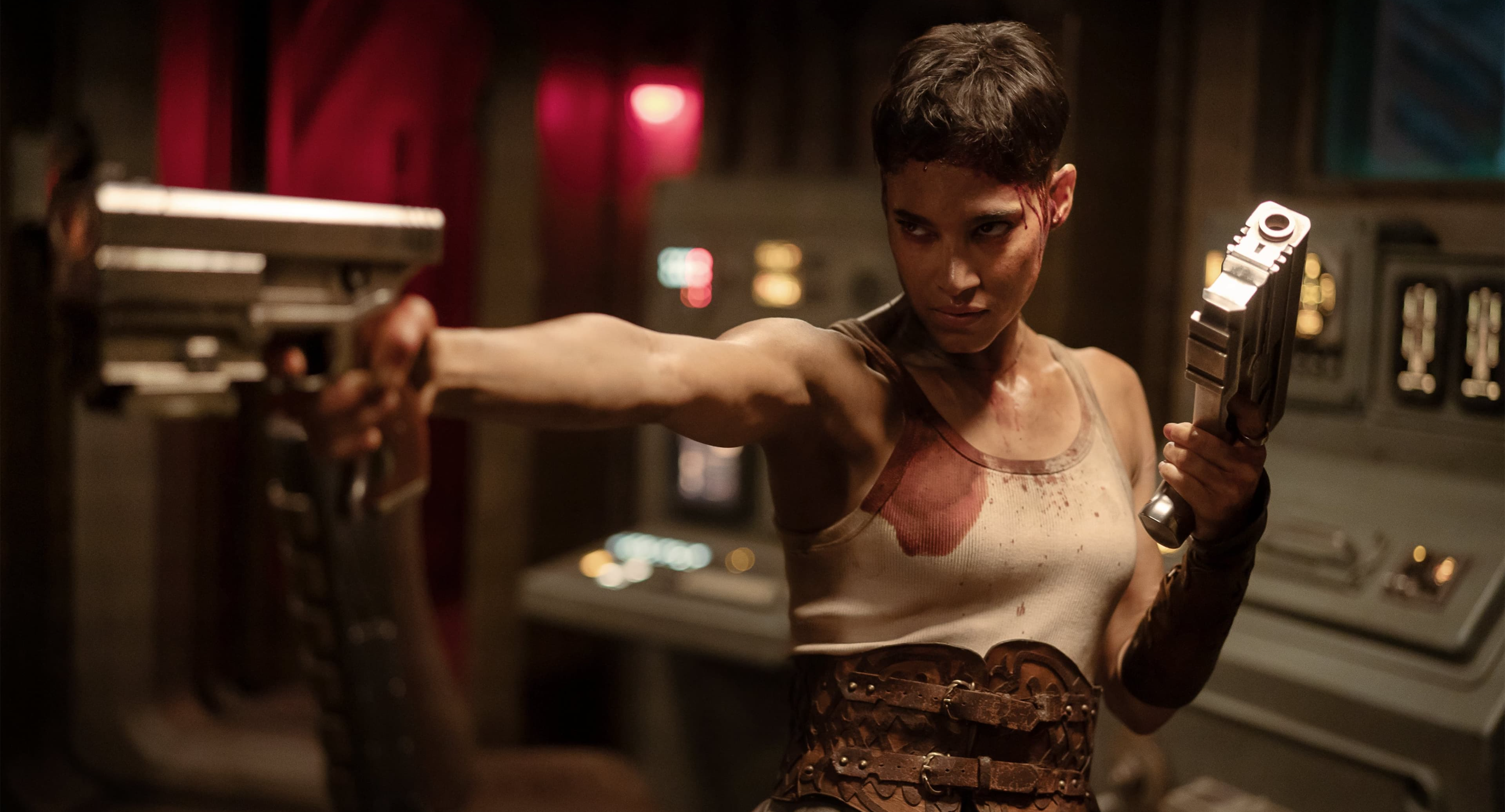Rebel Moon – Part Two: The Scargiver – Film Review
Published April 22, 2024

Look, I have been quite a massive fan of Zack Snyder‘s throughout pretty much my entire life. I grew up watching his feature film adaptation of Watchmen and loved it dearly. I vividly remember going to my local theatre three times in the span of one week as a thirteen-year-old to go and see Man of Steel with my best friends. Batman v Superman: Dawn of Justice is a movie that I have watched countless times and is one that I will always defend. His four-hour cut of Justice League is one of my top five favorite superhero films ever created.
And honestly, I actually enjoyed the first Rebel Moon film. While it wasn’t anything groundbreaking by any means, I found it to be a great deal of fun with tons of excellent visuals, interesting characters, and a grandiose scale that truly sucked me into the world and made it feel real. Was there a lot of slow-motion? Of course, but that’s to be expected with a Zack Snyder movie.
After watching the second Rebel Moon film – The Scargiver – I am absolutely crushed to report that I kind of hated it. There were only a few things about the film that I truly liked, whereas the rest of the movie was practically unwatchable and mostly just consisted of painstakingly long exposition dump scenes as well as too many boring shots of people just kind of moseying around wheat fields and hauling grain over their shoulders.
The actually meat and bones of the story doesn’t kick in until over an hour into the film, and by that point, there is less than fifty minutes remaining in the movie. The middle part of a film trilogy is always supposed to be the most exciting in terms of action, character, and emotion. Scargiver feels completely dull and devoid of any emotion. No amount of epic opera music or slow-motion shots are going to trick us otherwise, Snyder.
At its heart, the sequel attempts to expand on the rich tapestry set in A Child of Fire, where Kora (Sofia Boutella) and her band of warriors rallied to defend their moon against a formidable empire. The plot, unfortunately, meanders into predictable territory quickly, as viewers are once again thrust into the cliché of last-minute preparations to fend off an overwhelmingly superior foe. The repetition of a looming dreadnought and the tactic of rallying the underdog village feels less like a natural continuation of the story and more like a rehash of previous narratives seen across the space opera genre.
Snyder is known for his unique visual style, characterized by slow-motion sequences and a saturated palette, but The Scargiver suffers from an overreliance on these techniques, which detract from the story rather than enhancing it. The pacing of the film is uneven; monumental battles are interspersed with sluggish expository scenes that fail to develop the characters in any meaningful way. The climactic fight sequences, which should be the film’s crowning achievements, feel anticlimactic due to the predictable setup and outcome.
The screenplay, a collaboration between Snyder, Kurt Johnstad, and Shay Hatten, is another aspect where The Scargiver stumbles. Dialogue intended to be poignant often comes off as forced and lacks the natural flow necessary to build the world and its inhabitants. Characters are given backstories in a way that feels more like a checklist being marked off rather than genuine character development. Moreover, the revelation of Princess Issa’s survival and the convoluted plot to restore the throne introduces a late-game twist that seems contrived, further muddling an already overburdened storyline.
Despite the film’s structural issues, the cast delivers commendable performances with what they are given. Sofia Boutella’s portrayal of Kora brings a much-needed gravitas to the screen, though her character arc feels artificially inflated for dramatic purposes. Djimon Hounsou‘s Titus and Michiel Huisman‘s Gunnar stand out as well, offering depth in a sea of underdeveloped characters. However, even strong performances can’t salvage characters that lack genuine motivation and complexity, rendering many of the emotional beats unearned.
On a more positive note, The Scargiver continues Snyder’s tradition of visually stunning films. The landscapes of Veldt and the interiors of the dreadnought are rendered with meticulous detail, providing a feast for the eyes. Snyder captures the grandeur of space battles and the intimacy of personal moments with equal finesse, making it one of the few consistently positive aspects of the film.
Rebel Moon – Part Two: The Scargiver ultimately falls short of its ambition, weighed down by a lackluster script, predictability, and a failure to innovatively build upon its predecessor. While visually captivating, the film lacks the soul and narrative coherence necessary to elevate it beyond being a mere spectacle. As the middle installment of a saga, it unfortunately serves as a weak link, leaving much to be desired for the future of the franchise. In the vast universe of space operas, The Scargiver struggles to find its footing, offering little more than a visual treat devoid of substantial storytelling.
